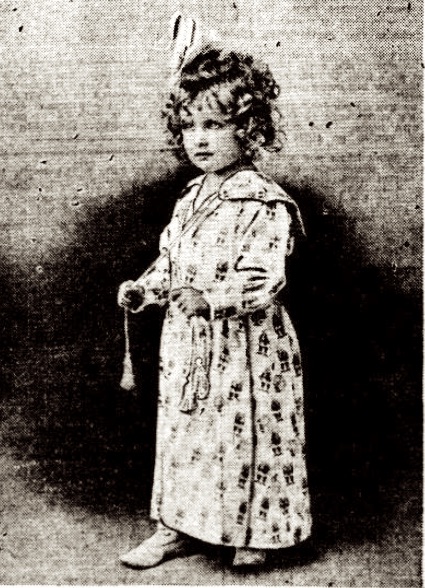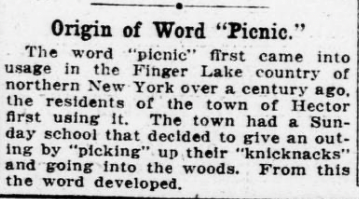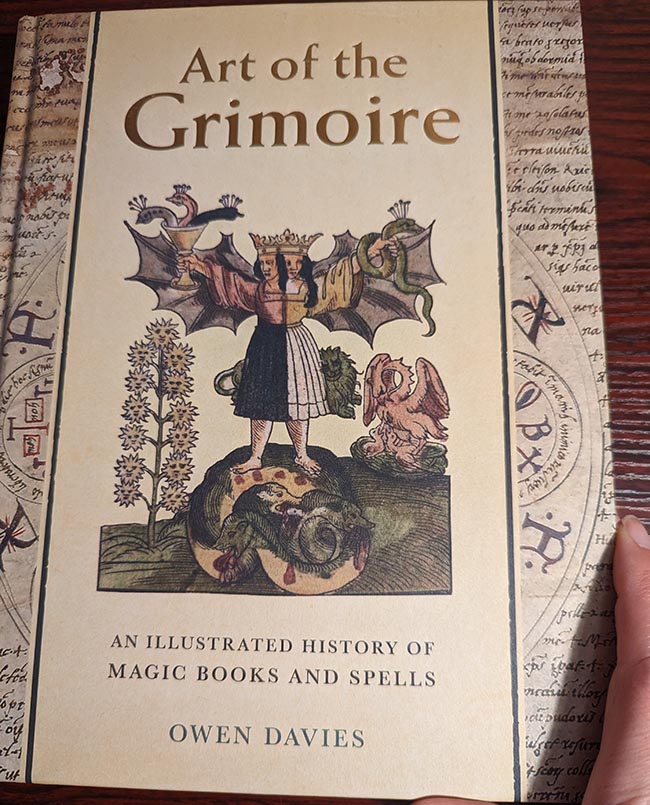

Toy Sized Bullet Leads to Belief Child Was Slain in Play
Pop Guns Examined
Once Followed by Man Who Frightened Her, Relatives Recall
The body of pretty, sturdy ten-year-old Theresa McCarthy, with a toy-sized bullet in her heart, lay in the undertaker’s establishment of Philip Stenger, at Meeker Avenue and North Henry Street, Brooklyn, today. Her mother sat beside it weeping. Her playmates stood about the dead in mournful wonder.
The girl had been a leader among the children in the neighborhood at play, in her studies and in her church devotions. Playfully her elders spoke of her as the “Little Vamp” because of her success in wheedling from them anything she wanted for herself or others.
An autopsy was performed on the body by Medical Examiner Charles Norris and his assistant, Dr. Charles West, at noon. They found that a .22 calibre short lead bullet — target weapon size — had entered her left breast and passed through her heart lodging in the muscles of the back. There was not a scratch or a bruise or any other evidence that the child had been handled roughly.
The home at No. 562 Morgan Avenue, where Mrs. Pauline McCarthy, accompanied by her roomer, Benjamin Prenderville, found the little girl lying in her nightdress among her Christman toys, was locked today, except when detectives under the direction of Chief Inspector Lahey opened it to look around, vainly trying to imagine the motive which could have led any one to kill the child purposely.
There were no evidences of a struggle. Nothing, the mother said, had been disturbed since she left the house in the morning to go to her work at the American Rattan Works, except that a kitchen window had been raised eight inches and Theresa’s poodle, Curly, had been shut in the bathroom.
The best guess the police could make was that Theresa, who had not been well, had admitted a playmate while she was dressing and that the playmate had obtained possession of a small revolver intended for target practice or exploding blank cartridges, and the shooting had been an accident. An effort was made to find whether there had been such a pistol or a floret rifle among the Christmas gifts in any of the neighboring families.
So completely puzzled were the police that they had Mr. and Mrs. McCarthy and the twelve-year-old nephew of Mrs. McCarthy go to the Greenpoint Station this afternoon to talk over this phase of the case. Mrs. Nell, Mrse McCarthy’s sister (who like Mrs. McCarthy lives apart from her husband) lives with their mother, Mrs. Catherine Schaefer, at No. 296 Nassau Avenue.
Mrs. Schaefer said that it had been understood that Theresa was to spend the day with her. When the child did not appear at 11 o’clock, Mrs. Hall sent her son, Charlie, to bring Theresa to luncheon unless he found she had gone to Mrs. Corbett’s.
When Charlie came in at 12 o’clock he said he had forgotten all about going for his cousin. After lunch he was sent out to get her again. He returned at 5 o’clock saying he had met another boy who treated him to a moving picture show and it was too late for him to go for Theresa when the show was over.
None of the children of the parochial school or the neighborhood of Mrs. McCarthy’s home owned a small revolver or a rifle or any weapon more dangerous than a pop gun with a string tied cork as a projectile. A number of these were solemnly brought out by youngsters for the inspection of the detectives, who examined them patiently drawing out childish confidences in the hope of hearing of somebody who had been seen with a “real gun.” Charlie Neil, who was the constant playmate of Theresa, did not remember anyone who had so much as spoken of a “real gun” in anybody’s home.
The door of the apartment has a snap lock. An intruder, if the door had been opened to him, could have slipped out quietly, locking it behind him by merely closing it.
The detectives at once sought the child’s father, Edward McCarthy, a veteran of Battery D, 306th Artillery, who has not lived with his wife since he returned from France because, he told the detectives, he had learned that in his absence she had grown too fond of attending dances and making friends of whom he did not approve. Their separation, he said, was entirely friendly.
He lives with his sister, Mrs. Mary Corbett, at No. 91 Driggs Street. There little Theresa, while attending school, came to lunch every day. There Mrs. McCarthy and Theresa were happy guests on Christmas Day.
McCarthy told the police when he returned to his sister’s home at 2 o’clock this morning that after that Christmas party he had gone out celebrating. He could remember with whom he had been and where. The detectives found persons who corroborated every item of his story and let him go free.
As he left them he took a $2.50 gold piece from his pocket and cried over it.
“I tried to get this to give to my sweetheart Sunday,” he said, “but I couldn’t find one in time. Yesterday I got it from a broker. And now my sweetheart is dead and I can’t give it to her.”
Prenderville is a clerk in the Brooklyn Post Office. According to the police, he told them he left the house half an hour after after Mrs. McCarthy Yesterday morning. Theresa, they quote him as saying, was then up and playing with her toys, after having put on her shoes and stockings. He was at the post office all day, leaving at 5:30 to go home. The police say they easily verified his story of his movements.
Two weeks ago, Mrs. McCarthy remembers, her little girl met her as was her custom as she was returning from the rattan factory and told how she and two other little girls were followed from St. Cecilia’s Parochial School to her home by a man who tried to speak to them and acted so strangely that the children ran from him.
She said she had obeyed her mother’s instructions and had not let herself into the house when a stranger was following her, but had run to get into the home of neighbors on an upper floor.
There were two keys to the house. Prenderville carried one, Theresa carried the other, hanging it on a hook inside the door when she was in. Mrs. McCarthy could not get in when she returned last night until Prenderville returned from his work at 6:30 o’clock.
This was Mrs. McCarthy’s story after she had come out of her hysteria long enough to answer questions coherently:
“After Christmas dinner at the Corbetts — Mr. McCarthy works for his brother, Mr. Corbett, a housepainter — Theresa complained that she had eaten too much. I took her home. She hated to go because she is very fond of her father and was ever so much pleased with the sled he had given her and the new collar for Curley.
“In the morning I set out Theresa’s breakfast and then waked her to make her take some medicine for fear she would be sick. It was bitter and she begged so not to take it that I let her go back to bed.
“I shut down all the windows; I did not lock them. I have never known Theresa to disturb the windows or anything in the house before going out to school. But perhaps, with nothing to do until lunch time, it might have been different. When she is going to school she goes to Mrs. Corbett’s to lunch, but yesterday she was to go to the home of my other sister, Mrs. Nell, who lives with our mother, Mrs. Schaefer, at No. 296 Nassau Avenue. When I went out I Kissed her and told her not to forget she was going to lunch with her aunt and grandmother.
“I had taught Theresa never to open the door if she knew strangers were outside and to run to a neighbor if she met strangers in the hall. If strangers spoke to her on the street, she was to run to Mrs. Corbett.
“So far as I know I have no enemies. Neither has Mr. McCarthy. We are friendly; we just agreed to live apart. He used to pay me $3.50 a week to help support Theresa, but lately he said that was not enough and has been giving me $5 a week.
“I was surprised when Theresa did not meet me coming home from work last night, but I supposed she had stayed at my sister’s house playing with her cousins. I decided to wait until Mr. Prenderville came with the key and then, if she had not come, to go over there.”
Mrs. Nell recalled that Theresa had told her cousins of the man who had chased her on her way from school. As the Nell children remember it, she said that man had a blue suit and a “knit caps like a sailor.” They cannot remember that Theresa repeated what the man said to her which frightened her.
First intimation of the crime received by the police came when Mrs. McCarthy, hysterical, ran screaming from the apartment building after the discovery of the body. She encountered Patrolmen Costello and Patterson of the Greenpoint Station.
They tried to question her, but her replies were incoherent. All the information they could obtain was: “My baby’s killed, my baby’s killed.” They led her back to the apartment, and then notified Headquarters. Chief Inspector Lahey responded and assumed personal charge of the investigation.
Inspector Arthur Carey of the Headquarters Homicide Squad, and Capt. Randles, in charge of Brooklyn and Queens detectives, worked under Inspector Lahey’s direction, reporting through Inspector Coughlin, at Police Headquarters. When they received the report of the autopsy their faith in the belief that the little girl might have been killed by another child in play was strengthened.
Some information of the access which one of Theresa’s little friends might have had to a weapon intended for target practice or blank cartridges had apparently reached the police and they set out in automobiles to verify it. There was some discussion of a Flobert rifle given to the brother of one of the little girl’s schoolmates.
Theresa was in the 5B grade of the St. Cecelia’s Roman Catholic parochial school. She was regarded as unusually bright. She attended church services regularly. She had attended Holy Communion Christmas morning.
Source: The Evening World (New York City, NY newspaper). December 27, 1922.


